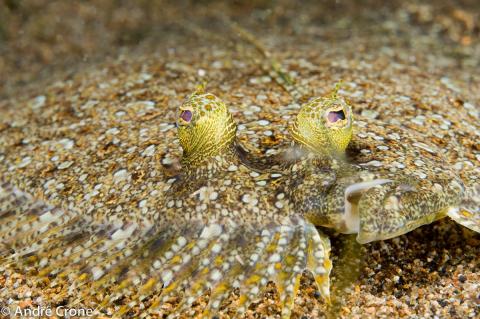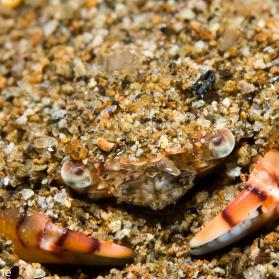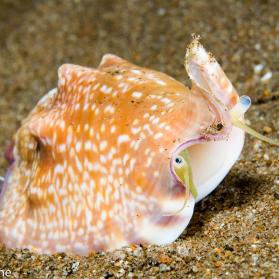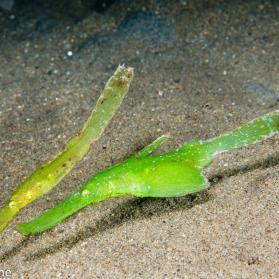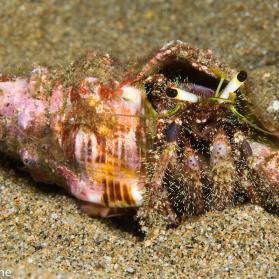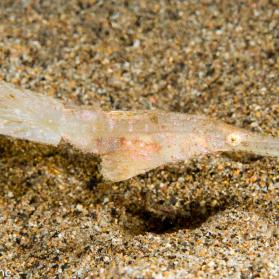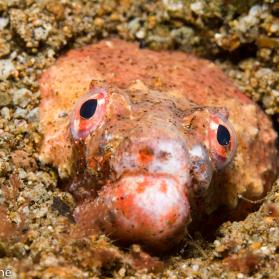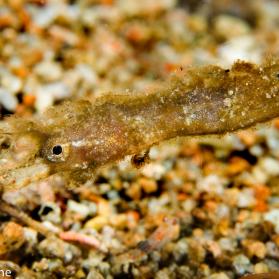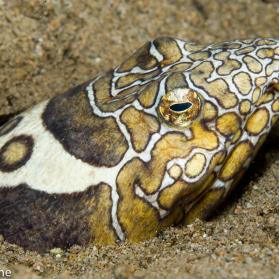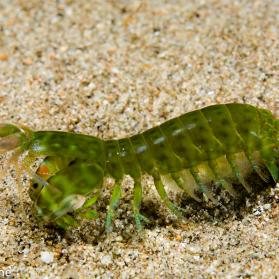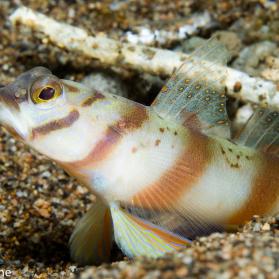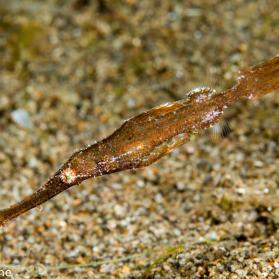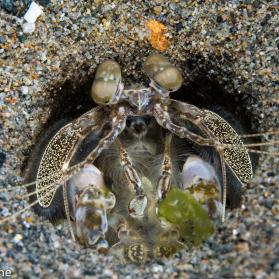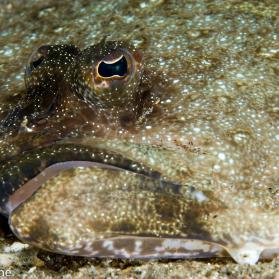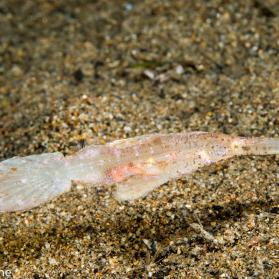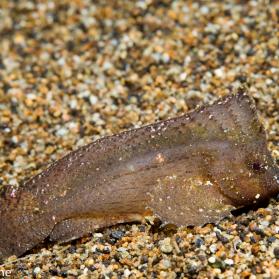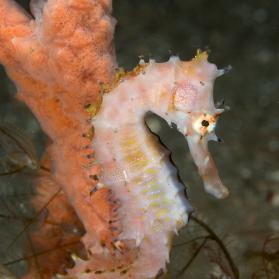During our last dives all we saw was sand. Where have we ended up this time? No colorful reefs, no beautiful coral gardens, only dull looking sand. This is not what we expected for this trip. We heard many enthusiastic stories from other divers about these dive sites. Could it be that diving on a sandy bottom is really worthwhile? We decided to rely on our guide and continued diving. Fortunately for the next couple of weeks we realized that there really are a lot of different animals living on sandy bottoms. The only thing to do is watch out for them very carefully. Follow your guide and his experience to learn to appreciate the many animals that live on sand.
Life under water is about eating and being eaten. Finding a suitable place to hide will help animals to survive. Animals that live on sandy bottoms don’t have a lot of hiding places available. These animals will soon be prey if they don’t find some sort of protection. Each animal has developed its own strategy to solve this problem. Perhaps crustaceans are the real specialists in hiding on sandy bottoms. Crabs, shrimps, prawns can be found on regularly basis in the sand. When diving in daytime the crabs or shrimps will be hiding in the sand. Afraid to be seen by their predators or just hiding to fool their own preys. At night most of the crustaceans gain some confidence to come out off their hiding places. Protected by the dark they walk around freely searching for food.
Whenever you encounter a crab or shrimp while diving in daytime you will notice the alertness off these animals. At the slightest disturbance, for example a diver, the crab or shrimp will hide itself in the sand. With only a few millimeters of its eyes above the sand it is not too difficult to swim by without ever seeing it.

